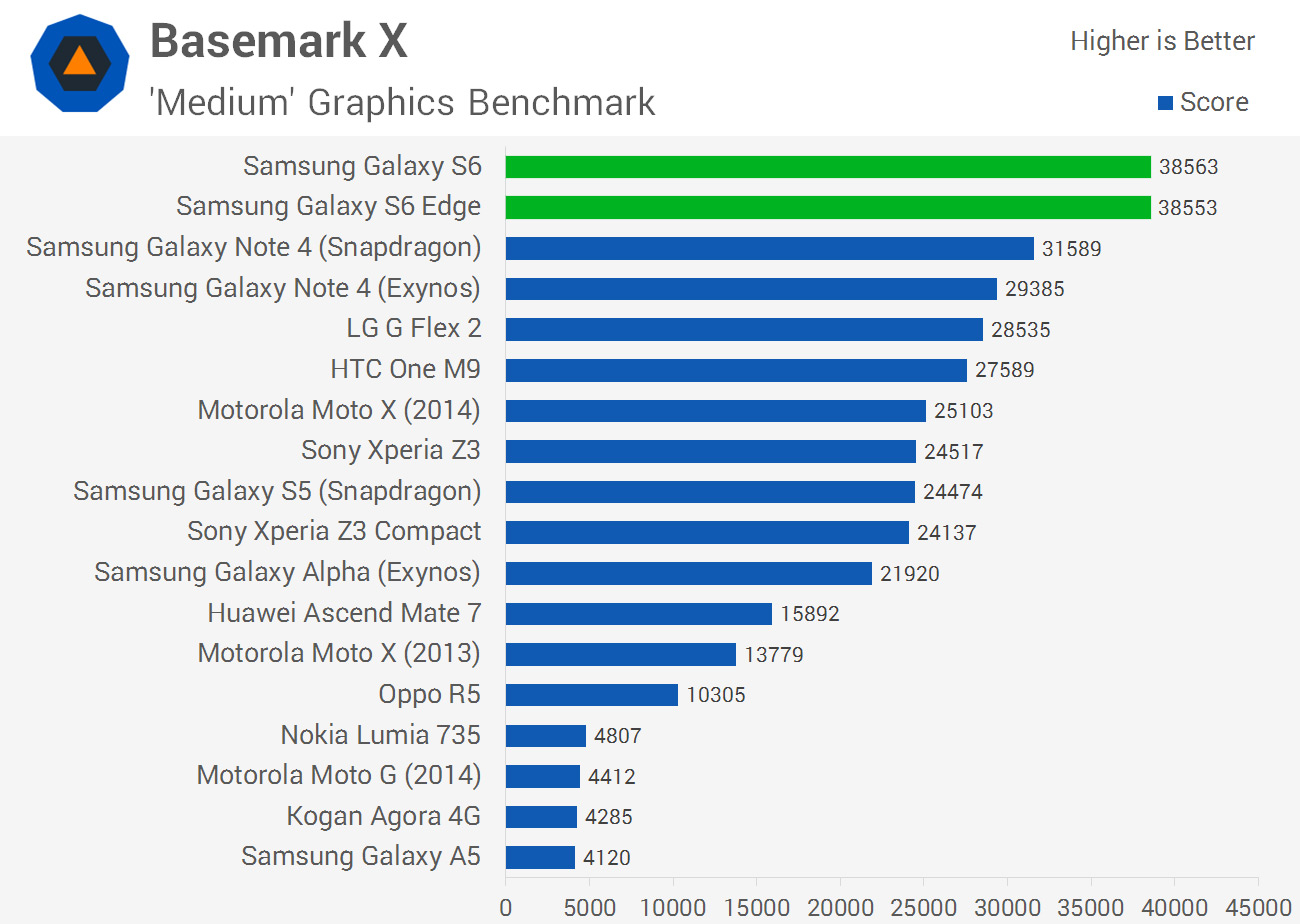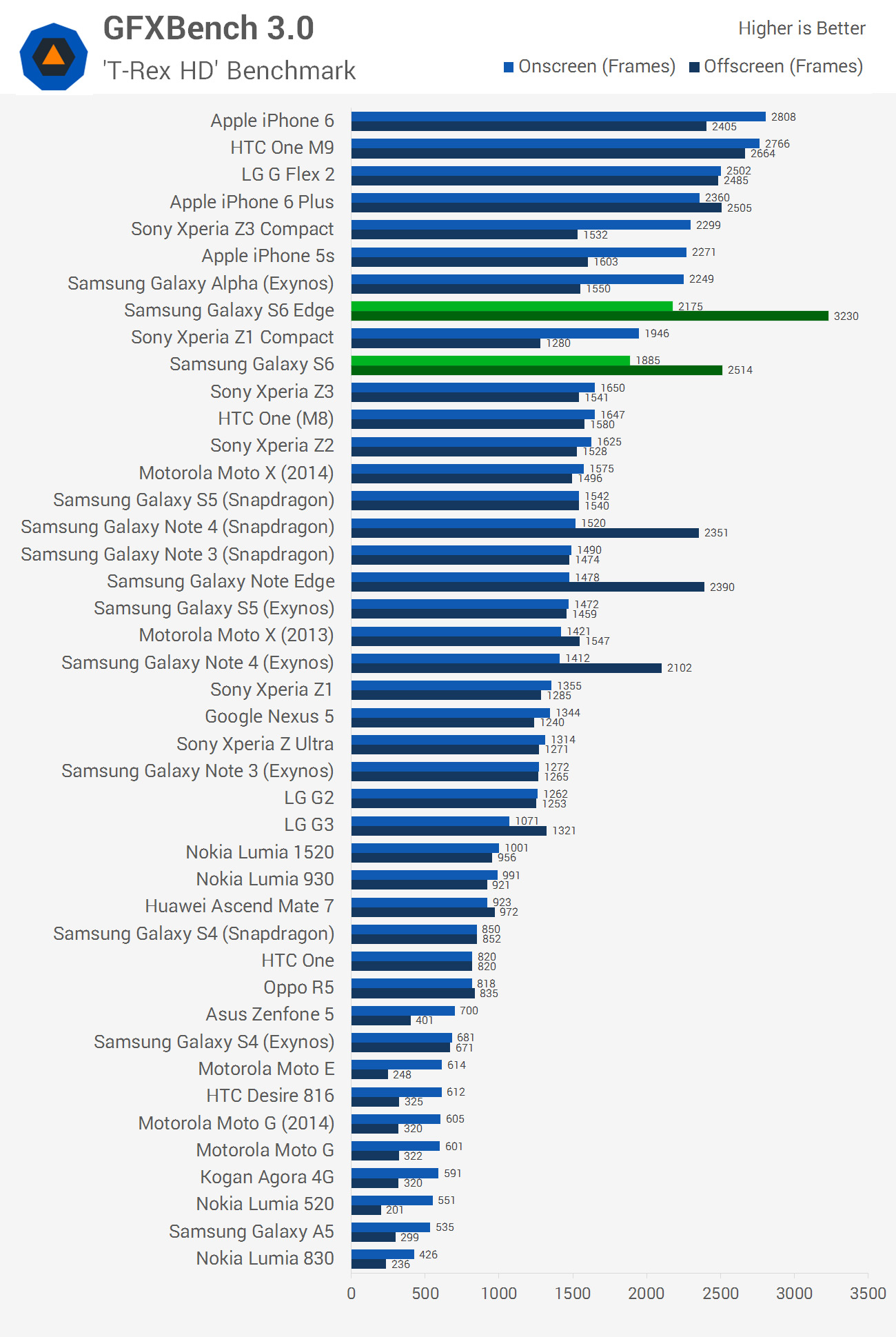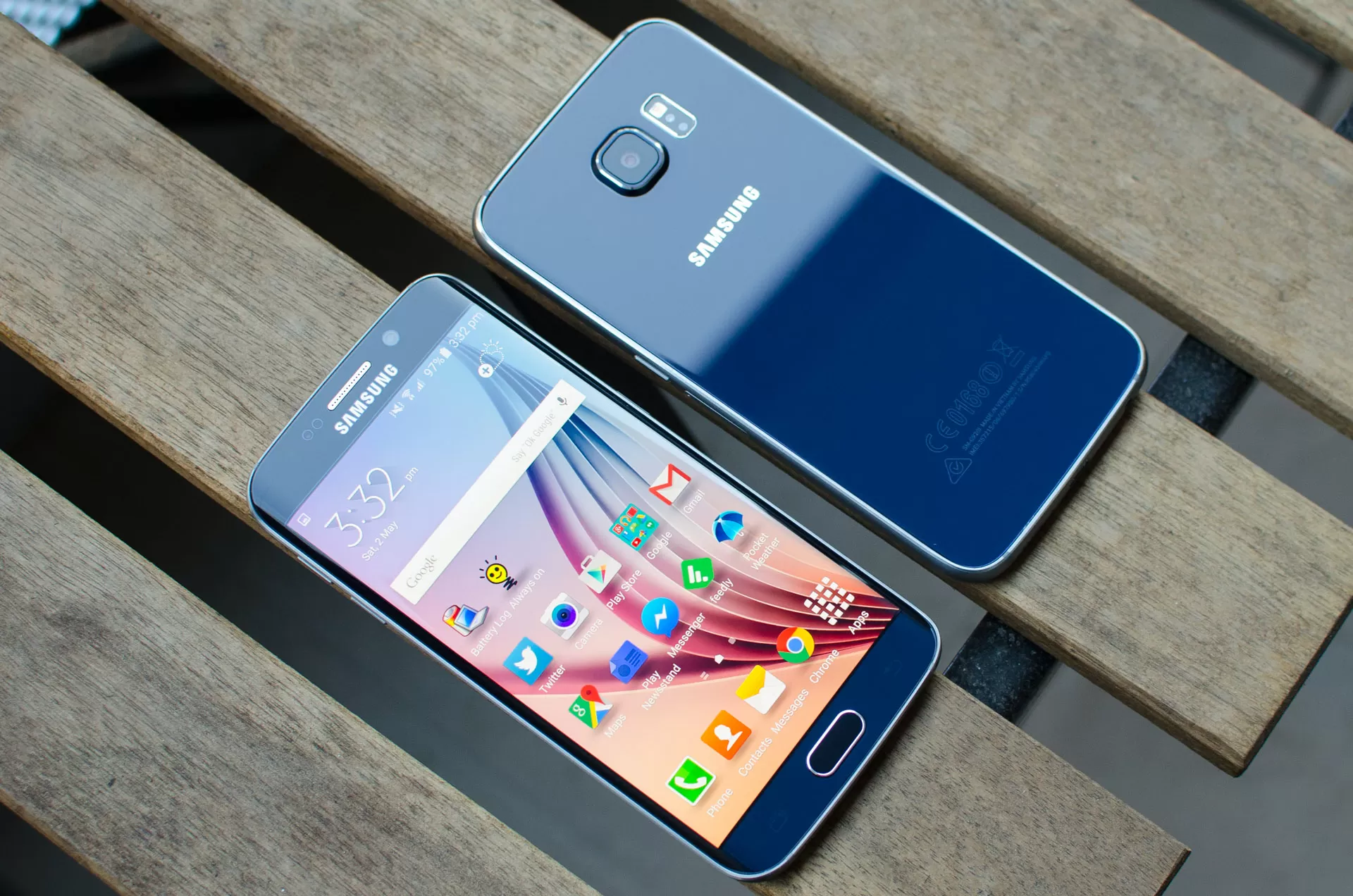GPU & NAND Performance
Packing a 1440p display, the Galaxy S6 is going to need a beastly GPU. Let's see how it fares.





In graphics benchmarks, the Galaxy S6's GPU outperforms the Snapdragon Galaxy S5's GPU by around 55%, which is a good result. The Mali-T760 MP8 also outperforms the Mali-T628 MP6 in the Exynos Galaxy S5 by 109%, the higher-clocked Mali-T628 MP6 in the Exynos Galaxy Alpha by 84%, and the Mali-T760 MP6 in the Exynos Galaxy Note 4 by 33%. Compared to the Adreno 420 in the Snapdragon 805, the Galaxy S6 GPU is 25% faster.
However, the Galaxy S6's Exynos 7420 gets beaten by the Snapdragon 810 in GPU-bound situations by 9% on average. When the Snapdragon 810 is powering a 1080p display, like it does on the HTC One M9, the lead extends to 40% due to the higher display resolution of the Galaxy S6. However the Galaxy S6 does beat the Snapdragon Galaxy S5 in onscreen benchmarks to the tune of 30%, which is a decent generational performance improvement.

As you can see from the chart above, the Galaxy S6 sustains maximum GPU performance for around seven minutes, which is a good result in comparison to the Snapdragon 810 that throttles 3-5 minutes in. There's also a lengthy period of performance that matches that of the Snapdragon 805 at its peak, while in the long term I expect sustained performance to remain slightly higher than the peak output of the Snapdragon 801.


The Galaxy S6 also leads the pack in terms of NAND performance, thanks to its UFS-based storage solution. Write and especially read speeds are extremely fast, and the S6 blasts the competition away when it comes to random reads. No doubt this helps with fast app loading and multi-tasking, and contributes to making the Galaxy S6 subjectively feel like one of the fastest mobile devices on the market today.
